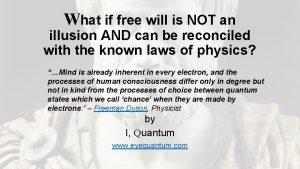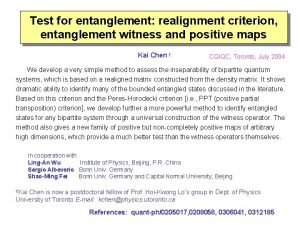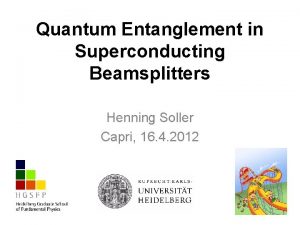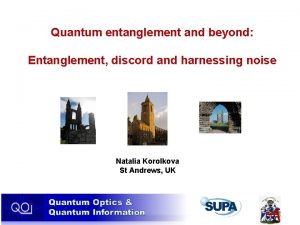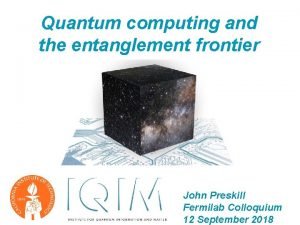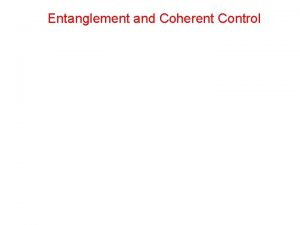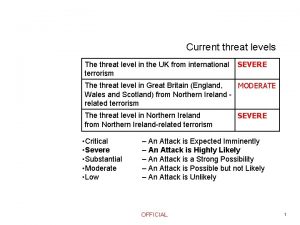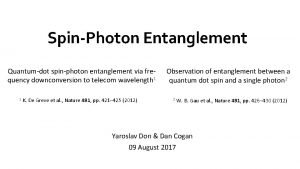Nuclear entanglement The growing threat to command control








- Slides: 8

Nuclear entanglement: The growing threat to command control James M. Acton jacton@ceip. org

What is entanglement? • Nonnuclear threats (real or perceived) to nuclear forces and their C 3 I capabilities • Dual-use weapons and nuclear weapons that are superficially similar to nonnuclear weapons • Co-located nuclear and nonnuclear weapons and C 3 I capabilities • Nuclear deterrence against nonnuclear threats

Drivers of entanglement • Increasingly capable nonnuclear weapons • Anti-space, high-precision conventional, and cyber weapons • Reduction in the redundancy of the U. S. nuclear C 3 I system • • Some ageing capabilities scrapped without replacement Greater standardization of components for different nuclear delivery systems • Increasing reliance on dual-use C 3 I assets • • SBIRS PAVE PAWS/UEWRs • Growing doctrinal emphasis on attacking C 3 I capabilities • China, Russia, and the United States

Incidental attacks • Entanglement is increasing the risk of “incidental attacks” • Attacks against SBIRS to enable nonnuclear regional ballistic missiles to penetrate missile defenses • Risk that nuclear C 3 I architecture is degraded over the course of a conventional conflict • Escalation risks • • • Crisis instability Misinterpreted warning Damage-limitation window

SBIRS vulnerability • SBIRS involved in both nuclear and nonnuclear operations • • • Early warning of a nuclear attack SBIRS HEO detectors reportedly hosted by electronic-intelligence collection satellites Nonnuclear ballistic missile defense • Even limited strikes could undermine nuclear earlywarning capability • • Polar early-warning represents a single-point vulnerability Potential SSBN patrol in N Atlantic areas represent a dual-point vulnerability • Dual phenomenology means there is no redundancy at a systems level

Basic approaches to risk reduction • Reducing the likelihood of attack • • Need to shape adversary perceptions Necessarily acknowledged • Reducing the consequences of attack • • No need to shape adversary perceptions Possibly secret • These objectives can be in tension • • Entanglement as a deliberate strategy Counter example: Building more systems

Reducing the likelihood of attack • Disaggregation of early warning impossible • Dual-capable missiles • Dispersed supplements to SBIRS with capability limitations • • • Hosted system, cf AFSATCOM Challenge of convincing adversaries about limitations Risk of weakening deterrence of attacks against SBIRS • Small, low resolution, dispersed detectors • More useful for early warning than BMD or other missions • Exo-atmospheric missile detectors • Tuned to IR frequency that is absorbed by the atmosphere

Reducing the consequences of attack • Medium resolution, dispersed detectors • • • Hosted system Open alternative to SBIRS (trade redundancy for capability) Secret supplement to SBIRS (challenge to keep secret) • Weather satellite back-up • • • Secret supplement to SBIRS Probably need to build the right frequency band into future satellites Allied weather satellites best placed


